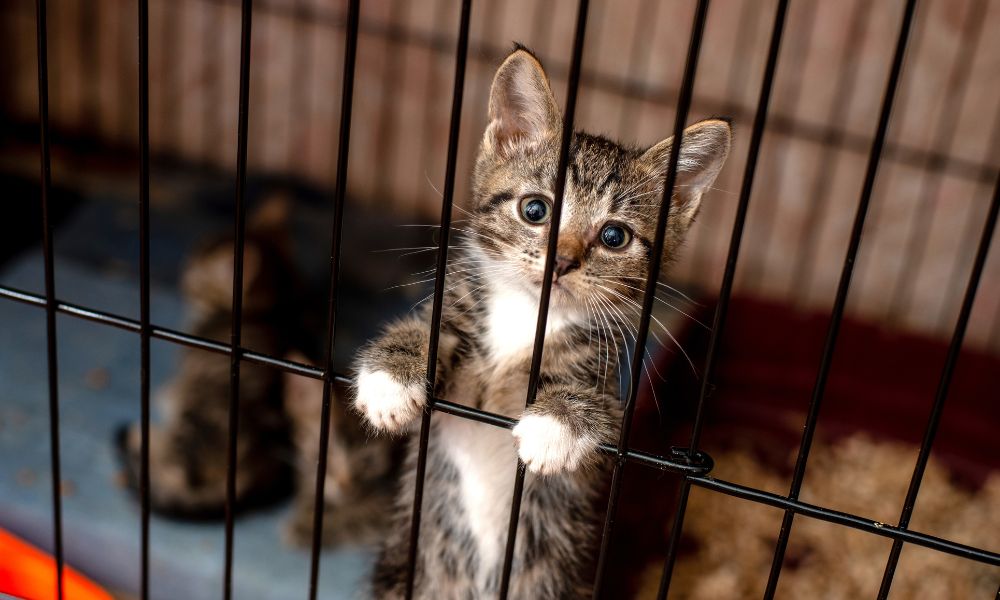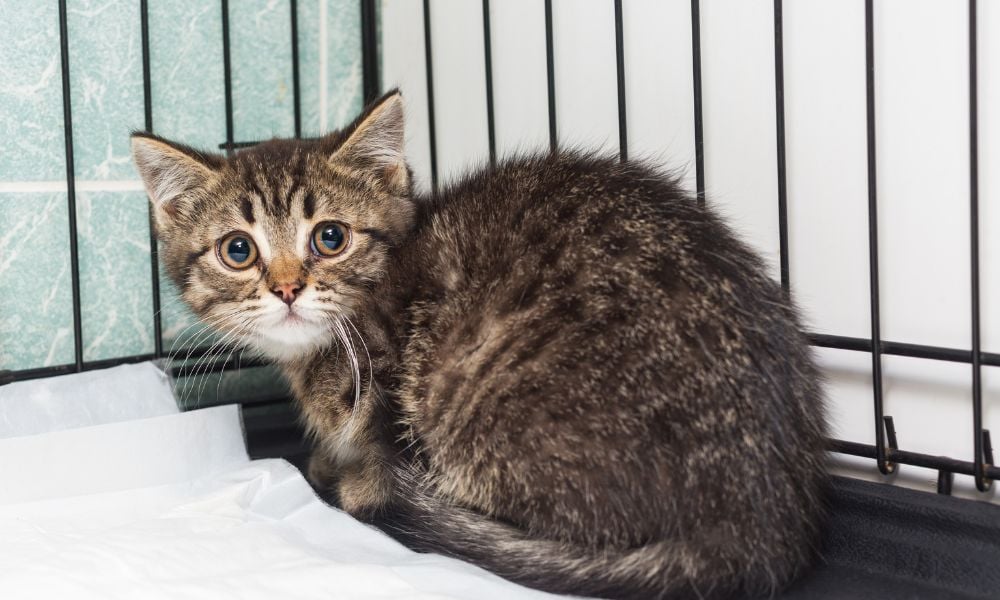LFT INVESTIGATES
DEADLY EXPERIMENTS ON KITTENS
AT THE UNIVERSITY OF MINNESOTA

(Representative image via Shutterstock)
A Lady Freethinker investigation found kittens had their skulls drilled open and their brains jolted with electric pulses and light rays by researchers at the University of Minnesota, who then killed the kittens at the experiments’ end.
FINDINGS
Several groups of temporarily paralyzed kittens endured craniotomies — cruel procedures that use a high-speed drill to bore through the kittens’ skulls — and had electrodes or probes implanted in their brains so scientists could manipulate their brains and track the changes through functional magnetic resonance imaging (fMRI) scans.
Another group of paralyzed kittens had their brains scanned while researchers presented “visual stimuli” — including videos of mice — to the immobilized and defenseless animals.
While the “terminal” study never intended to allow any kittens to survive, kittens also died prematurely from complications after suffering for hours or days, records showed.
Meanwhile, the experiments have yielded no direct clinical applications, outcomes, or patents for humans — or cats — to date, despite consuming years of valuable research time and more than $9 million of taxpayer-supported funding from the National Institutes of Health. Rather, the university was required to suspend the experiments and develop an “entirely new protocol.”
The deadly experiments on kittens have not resumed — and it’s critical that they never do.
KITTEN CASUALTIES
Monitoring records obtained by LFT through a public records request revealed that kittens have suffered bruises, vomiting, muscle weakness, ruptured veins, inflamed tracheas, hypothermia, died prematurely, and been “euthanized” to stop their unanticipated suffering.
TAMMY
Tammy was a female tuxedo kitten who had undergone at least 15 procedures, starting when she was 10 weeks old, when she died suddenly during a scheduled craniotomy on May 12, 2021. On that day, her monitoring records note that researchers blew a vein, tried for 17 minutes to intubate her, let her body drop to hypothermic levels, and attempted CPR after her heart stopped. During her past scans, she had historically prolonged recoveries, hypothermia, vomiting, weak muscle control, coughing, bruises, and a lack of appetite for days — including during a 2-month period when she lost up to 12 percent of her body weight.
APRIL
April, a 3-month-old kitten whom researchers noted liked “playing and exploring with other kittens” and “purred when cuddled,” was killed after a researcher accidentally gave her the paralytic Vecuronium at 4.5 times the approved dose — in alleged violation of the federal Animal Welfare Act — and the kitten likely suffered organ damage. Her monitoring records showed researchers also repeatedly had trouble intubating her — making more than five attempts over 44 minutes during one scan — and getting accurate readings of her vital signs.

(Source: U.S. Department of Agriculture. Emphasis: Lady Freethinker)
TITAN
Titan was an 11-week-old gray male kitten who was killed following complications from an MRI scan. Researchers reported he was walking but “wobbly,” with muscle shakiness, low oxygen levels, and that staff “tried to figure out what was wrong with him for several hours.” They monitored him overnight but by morning he had a swollen face and a seizure. This kitten suffered for at least 44 hours before being “euthanized,” according to his records.
CASEY
Casey, an 11-week-old kitten, underwent at least two procedures before researchers killed him. During the first scan, it took researchers 20 minutes to successfully intubate him, with his monitoring records noting his tongue was swollen and turned blue, he suffered low oxygen levels, wheezing, retching, and dehydration. A week after this scan, researchers put him under for a craniotomy, blew five veins trying to insert a catheter over 30 minutes, and blew another vein while injecting a “euthanasia” drug.

(Source: University of Minnesota. Emphasis: Lady Freethinker)
ZEUS
Zeus was a 10-week-old brown tabby kitten who died on his own two days after an fMRI scan, following which his monitoring records showed he was less active than usual, spit up food, and had raspy and strained breathing as he struggled to breathe through an inflamed trachea.

(Source: University of Minnesota. Emphasis: Lady Freethinker)
LUNA
Luna was a 1-year-old female cat used in anesthesia “training,” a surgery to implant a probe, a scan, and a craniotomy. She had registered low body temperatures during a procedure where researchers blew one of her veins, according to her records.

(Source: University of Minnesota. Emphasis: Lady Freethinker)
IT’S TIME FOR THE UNIVERSITY OF MINNESOTA
TO STOP KILLING KITTENS

(Representative image via Shutterstock)
Decades of gold-standard research have made clear that irreconcilable genetic differences exist between humans and other species that make cruel tests on animals
costly, unreliable, and unsafe.
Ethical, human biology-based approaches that don’t force defenseless animals to suffer and die need to be the science of the future.
It’s time for the University of Minnesota to forever end their deadly kitten experiments and
invest in a more compassionate way forward.
